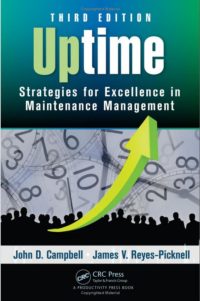Reliability depends on the right maintenance being done the right way, and at the right times. At the core of making that happen is the work management process. It is a six step process that’s fairly simple, but often not followed very well. Without, workforce deployment becomes reactive to emergencies and maintenance costs are high. Work done in those reactive situations is anywhere from 1.5 to 3 times as expensive as work that is fully planned and executed on schedule. In some industries the cost of emergency work is even higher.
The simple cycle of identifying what work must be done, how to do it and what resources are required, when to do it, who to do it, then doing the work, and finally, learning from the experience is what good maintenance departments do. Getting this right drives improved efficiency and opens the door to enhanced effectiveness through a variety of reliability improvement initiatives.
There are planning and budgeting cycles to consider. They range from detailed job plans, through a project, shutdown and annual cycles to strategic multi-year and asset life-cycle focus. The basics of planning and scheduling apply to all work. Individual jobs, projects, and shutdowns are all managed the same way, the only difference being scale and scope of work. Shutdowns, in particular, are high cost, intensive activities that occur when revenue generation through production is zero. It’s important to get it right and avoid the temptations to do too much unplanned or poorly planned work in the available time windows. There is a variety of tools and standards to assist the planner so that he can deliver high workforce productivity consistently and keep your costs down.
Mobile workforce management differs from a fixed plant. Communications are more challenging and have led to the development of a variety of technologies. Scheduling plays a big role in achieving efficiency due to the need for travel from job to job. Technologies like Global Positioning Systems coupled with Geographic Information Systems help keep mobile workforces productive while meeting the demands of far-flung customers. Mobile work crews are autonomous by their nature and carry much of their own support parts and materials with them, but those must be replenished regularly or excessive travel time will result. Planning and scheduling, this time with geographic consideration, is a key to success in managing a mobile workforce.
Many maintainers complain about a lack of parts to support their work. In compensating, they often keep stashes of parts hidden, outside the stores and supply chain. That’s a symptom of poor planning, poor forecasting, and a lack of integration between work management and materials management processes. More on that later.
Work management is the single most important maintenance process. Attention to it provides substantial benefits and leverages your busy workforce.
Uptime Training Courses Now Available:
Planning and Scheduling training – basic and advanced.
We begin our Uptime improvement programs with education. This helps you make informed choices about what to do or not to do, based on your existing knowledge of your current practices when compared with proven successful practices.


